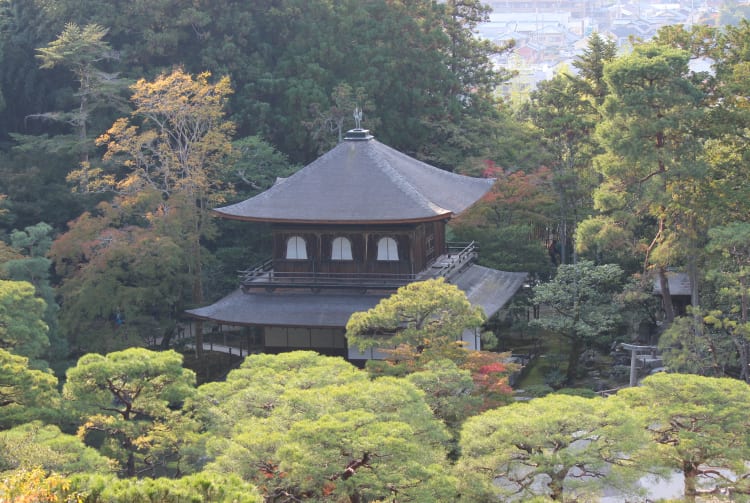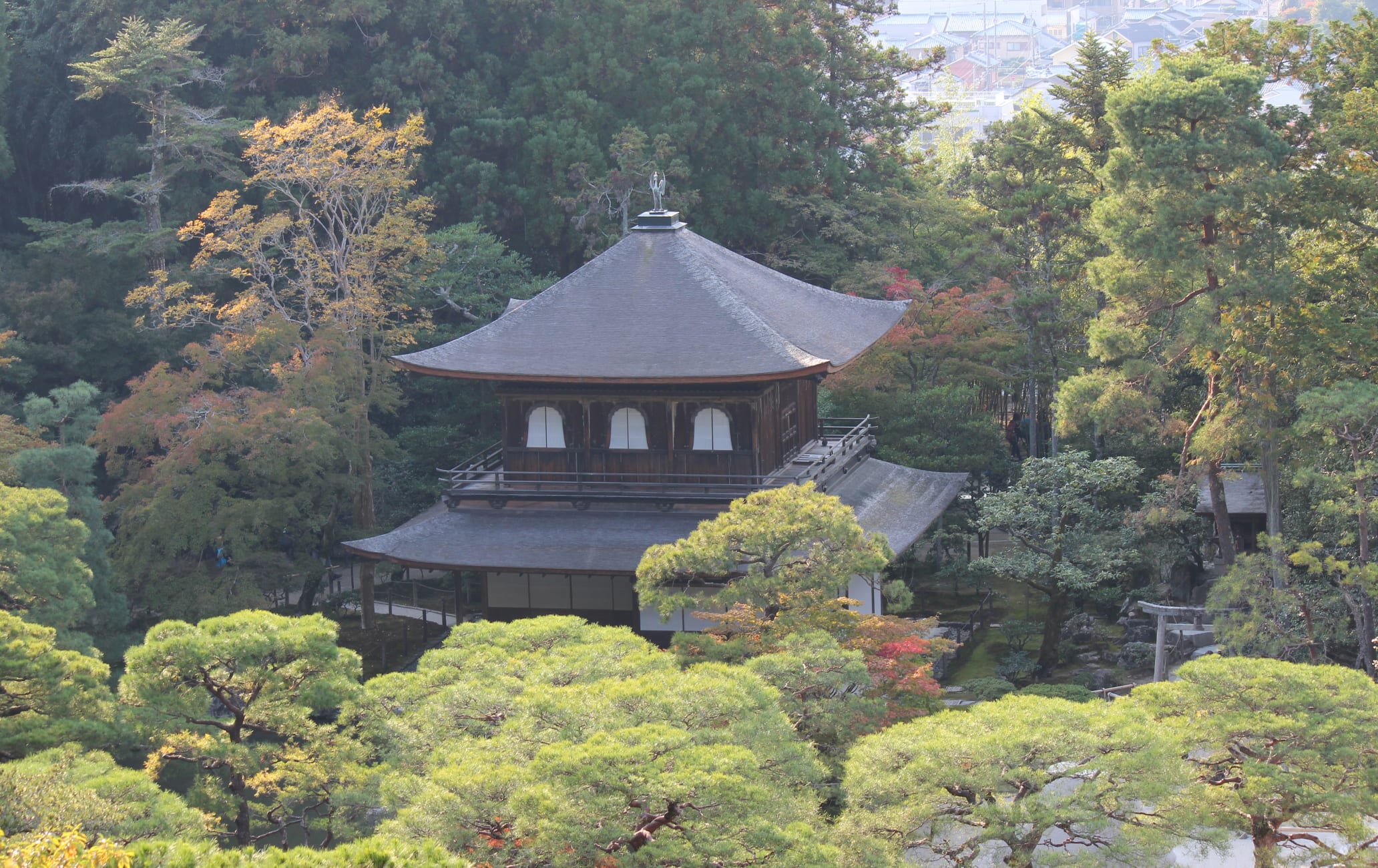Once a shogun's retirement villa, now a classic Zen temple
Originally built as a retirement villa for a 15th-century shogun, Ashikaga Yoshimasa, Ginkakuji is one of Japan's most classic Zen temples and a prime example of the wabi-sabi aesthetic of beauty in imperfection. Before it became a temple, the shogun's villa was the center of Higashiyama culture, from which flowered the tea ceremony, flower arrangement, poetry, and Noh theater. Today, Ginkakuji is one of the best-known temples in Kyoto.
Despite its name—which translates as Silver Pavilion—Ginkakuji is missing something, namely silver. The shogun Ashikaga Yoshimasa originally planned to cover the building exterior in silver foil, but never did.
Don't Miss
- Ginkaku, the main temple building
- Find peace in the immaculate Zen garden
- Other on-site architectural treasures such as the teahouses
How to Get There
Ginkakuji Temple is in the Northern Higashiyama section of Kyoto city. It is in the heart of old Kyoto, next to the area of the old Kyoto Imperial Palace .
From Kyoto Station , take bus #5 or #17 to Ginkakuji-michi bus stop. It's a 10-minute walk from there.

An homage to Kinkakuji
This compound was originally built by the shogun Ashikaga Yoshimasa as a retirement villa in 1460 in eastern Kyoto. He added the structure now known as the Silver Pavilion in 1482, as a hall dedicated to the bodhisattva Kannon. He designed the building to look like a smaller, more humble Golden Pavilion (Kinkakuji), which his grandfather, Ashikaga Yoshimitsu, had commissioned.
Beautifully imperfect
In place of gold, Ginkaku was supposed to be covered in a silver foil overlay. That was never done, and with its unfinished look, it's believed that the structure looks as it did the last time Yoshimasa saw it. This perfectly embodies the Buddhist idea of wabi-sabi.
In 1485, Yoshimasa became a monk and took the name Jisho (meaning "Radiant Mercy"), hence the temple's official name of Jishoji. After Yoshimasa's death in 1490, it was turned into a temple upon his request.
Influential architecture
The Togudo, built in 1468, and to the left of the Silver Pavilion as you enter, is the second most important building of the compound. It is also a Buddhist hall but built in the style of a residence. The Togudo was a radical piece of architecture and influenced elite military architecture for generations afterward.
It also influenced the style of modern Japanese houses. Notable features unique at the time include a built-in desk (shoin), staggered shelving, a tokonoma (recessed display space), and painted sliding screens. All of these features are still typically found in traditional Japanese homes. It is said that this is the first example of a 4.5 tatami mat tea room, which became the fundamental size for a tea ceremony.
A desire for peace
Yoshimasa's time as shogun was marked by strife and war, particularly the Onin War of 1467-77. He wasn't a capable ruler and wanted to relax in retirement. He was a great patron of the arts and brought painters and poets into his home.
Culture that spread throughout the nation
Ginkakuji was the center of Higashiyama culture, which influenced nobles and commoners alike. Many of the arts that are universally known as typically Japanese were developed during this time, including the tea ceremony, garden design, poetry, Noh theater, ikebana (flower arrangement) and Japanese architecture.
The grounds of Ginkakuji
The sand garden of Ginkakuji is famous for its meticulously arranged sand sculpture, said to represent Mt. Fuji.
This classic Japanese temple is one of the most popular places to visit in Kyoto, so it's best seen in the off-season or just after opening and just before closing. A trail behind the garden offers an escape from the crowds, leading up a hill to a great view of the temple and the surrounding city.
While a visit to Ginkakuji can be completed in an hour, the surrounding area is a destination in itself filled with famous sites. These include many temples and shrines, including Chion-in Temple , Nanzenji Temple, and Heian Jingu Shrine . It is also very close to the Philosopher's Path , a path that meanders along a stream, with trees and shrubs that inspire contemplation.
The Kyoto Zoo, Kyoto Municipal Museum of Art, National Museum of Modern Art, and other facilities dedicated to the art and culture of Kyoto and Japan also make this district a great place to visit.


























































